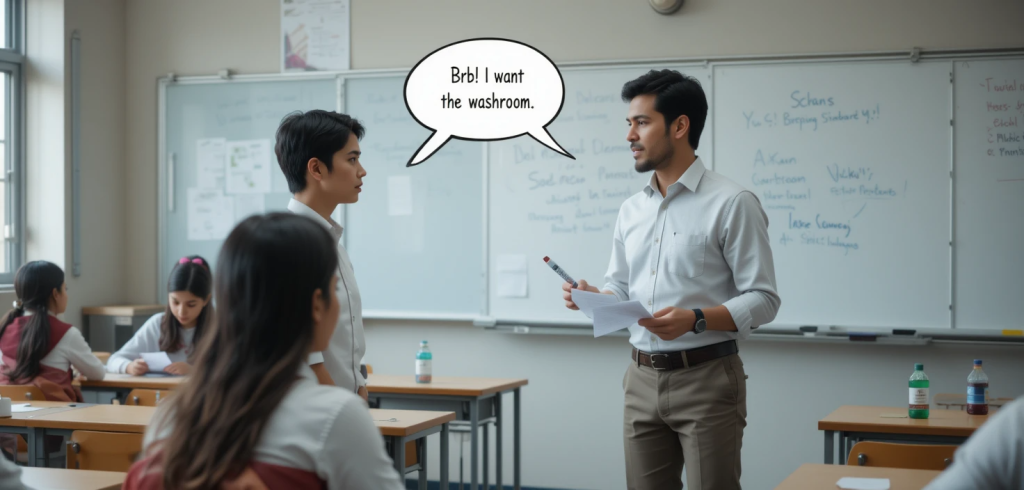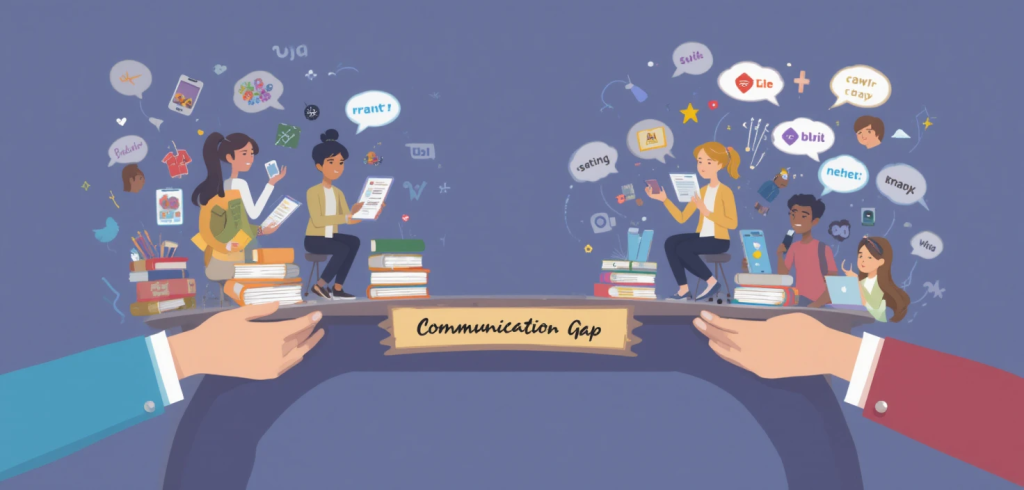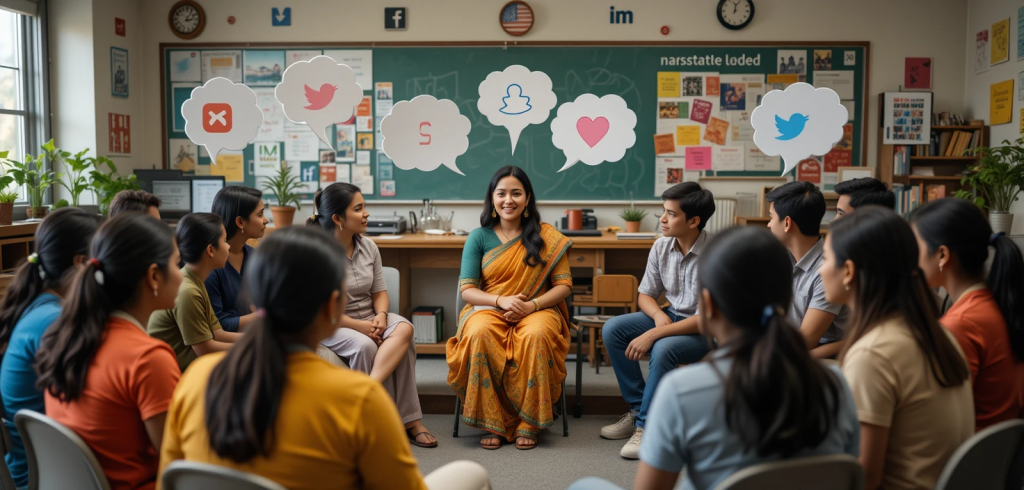No products in the cart.
Thanks to the influence of platforms like Snapchat and Instagram, language is changing faster than ever. For today’s youth—Gen Z and the upcoming Gen Alpha—communication is filled with abbreviations and slang. Words like “sus,” “slay,” and the Oxford Word of the Year 2024, “brain rot,” are part of their daily conversations. While this linguistic creativity keeps evolving, a critical question emerges: Are teachers keeping pace?
Picture this: a student tells their teacher, “Brb! I want to use the washroom,” and the teacher looks confused. This small moment reflects a more significant issue—a communication gap.

According to a 2022 Education Week study, students who feel understood by their teachers are 45% more likely to perform better academically. When teachers and students share common ground in communication, trust and engagement flourish. But understanding new slang isn’t just about knowing words—bridging generational differences and creating a culture of mutual respect.
These sessions would make educators more relatable and prepared to engage with students. However, with their already packed schedules, many teachers might feel overwhelmed by the idea of another training program. On the other hand, with packed schedules, most teachers might be swamped at the mere thought of yet another training program

Building relationships through natural conversations is a much simpler approach. Informal talk with students is a good way for teachers to learn new terms. For example, asking a student what "sus" means or laughing with the student over memes creates an environment where teachers learn the language and reveal their humanness. This can strengthen bonds and establish trust in the classroom.
Language does more than convey information—it reflects cultural values. Terms like “manifest” (symbolising optimism) and “brain rot” (highlighting concerns about overusing digital devices) reveal Gen Z’s worldview.
When teachers learn to understand and respect these language changes, they connect with students' realities. For instance, when a teacher uses "manifesting success" to describe a specific lesson, students connect because it means the teacher gets down to their level.

Teachers and students will need to adapt to bridge the gap. Teachers can take a step toward learning the changing language, and students can help by opening up about communication issues. The dialogue thus creates a learning environment where every voice is heard, and every student feels important.
Teachers can find it challenging to keep up with modern trends, including language. This is where Singhania Quest+ comes in. With innovative tools designed to support educators, Singhania Quest+ helps schools adapt to changing times while ensuring teachers stay connected with their students. From lesson planning to understanding youth culture, it’s the ultimate partner for modern education.
Let’s adapt to Gen Z's evolving language and make classrooms a space where communication thrives, bridging generational gaps for better learning outcomes.
How can schools keep up with Gen Z's evolving language? Share your thoughts in the comments below!
